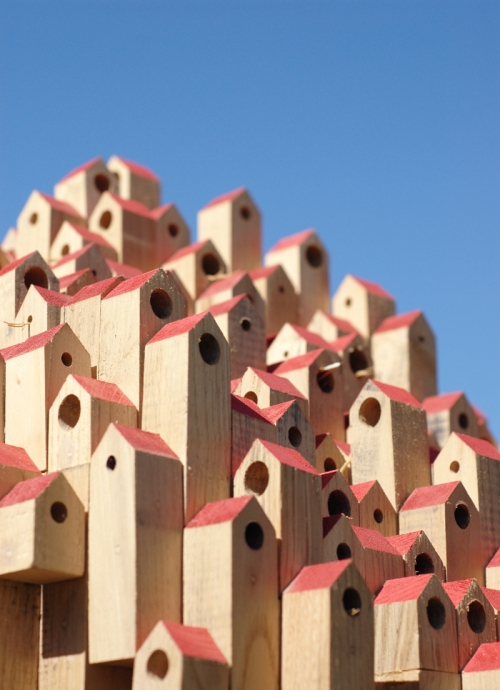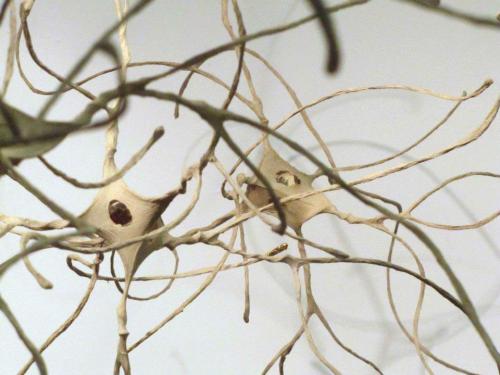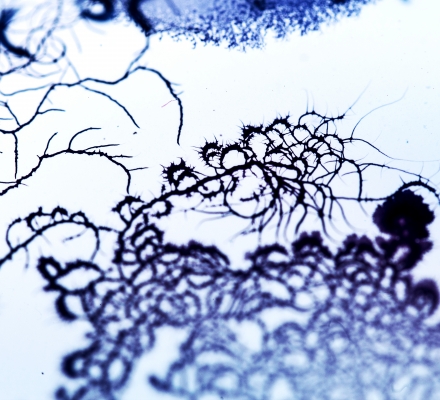The work of Brandon Ballengée, an artist, biologist and environmental activist, often focuses on the damage that humans do to nature. For example, he has worked for years on both art and scholarship based on the rising occurrence of developmental deformities and the decline in populations of amphibians. A major 2013 installation, Prelude to the Collapse of the North Atlantic, looked at catastrophic declines in marine diversity.
The photo-based installation Ti-tânes, however, takes a different view. Ballengée here was inspired by the Titans of Greek mythology, metaphorical representations of the forces of nature who were eventually overthrown by the more human-like gods, but nonetheless survived, banished to austere lands.
The artist explains:
With the Ti-tânes series, I aim to portray ancient animal species, which are able to survive (perhaps even thrive) in habitats environmentally impacted by human activity. Such organisms have endured millions of years and are now adapting to today’s ecological degradation.
For the works in this exhibition, three nine-spined stickleback (Pungitius pungitius) collected from the a polluted canal in Chamarande (France) were chosen as subjects and carefully stained using Alizarin red dye, which adhered to bone, then cleared using digestive enzymes to make surrounding tissues transparent. From the biological research side this was done to analyze specimens for any developmental abnormalities that in life we could not have seen. Secondly, this treatment was performed as an artistic choice – as clearing and staining is a way to change the way we are able look at such organisms, how we perceive them – they are abstracted yet made more clear. Next they were photographed on coal (literally fossilized carbon) meant to recall ancient life as well as changes to today’s climate made through the continued burning of such fossil fuels.
These artworks are meant as portraits of the individual fish, as each is unique as each of us. Through size (making them larger than life) they are scaled so the human viewer sees them at a magnitude beyond our ordinary bodily scale – grandiose and sublime like nature herself. Metaphorically they are meant to recall the ancient lingering nature deities surviving in banished now degraded environs. Viewed as skeletons they are not meant to represent death but instead life persisting in ecosystems made preternatural by human activity.
The Ti-tânes series is currently on exhibit at the Museum Het Domein in Sittard, The Netherlands, as part of Seasons in Hell, a retrospective exhibition of Ballengée’s artwork, through June 29, 2014. An online virtual tour of the exhibition is available here.
Filed under: The Art of Science Tagged: Brandon Ballengee, marine diversity, Museum Het Domein, Ocean diversity art, science art



